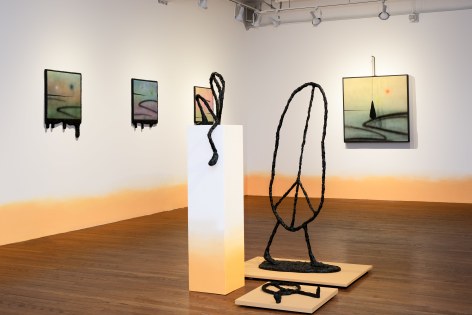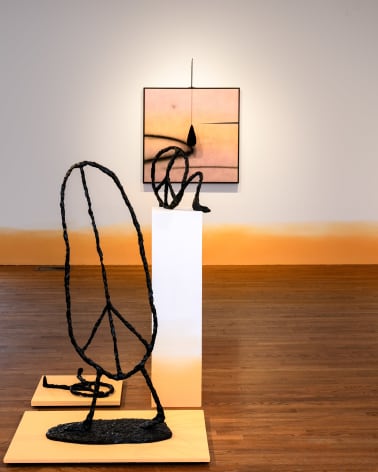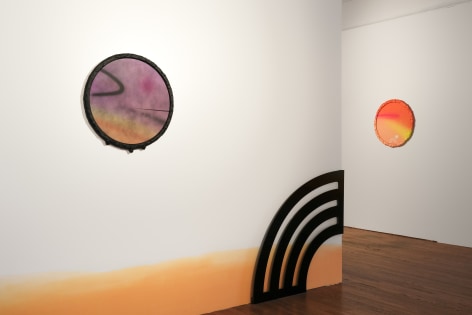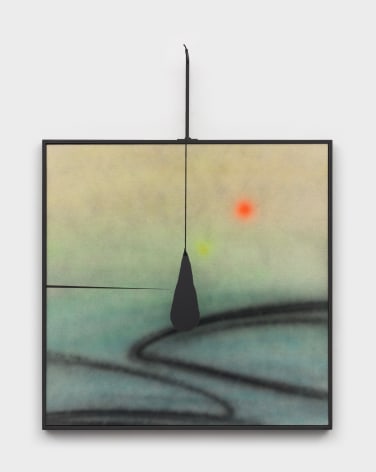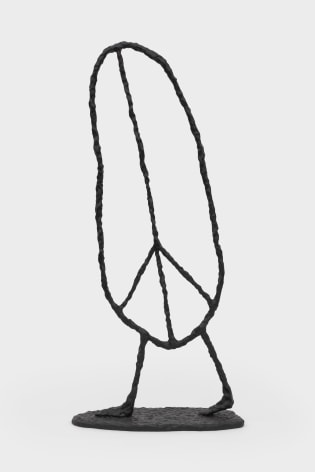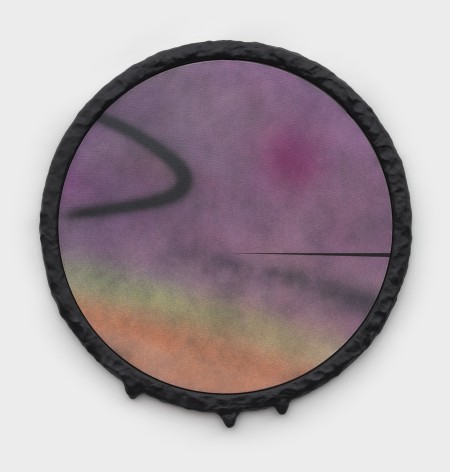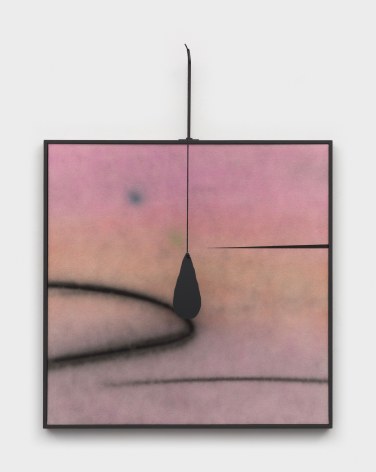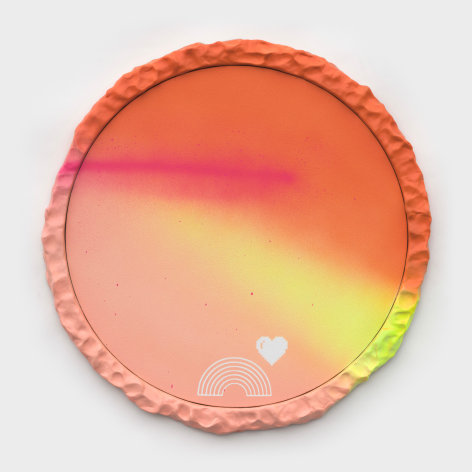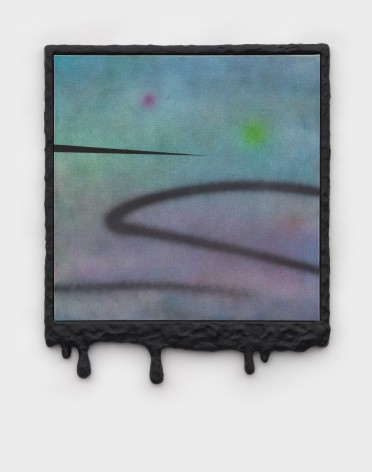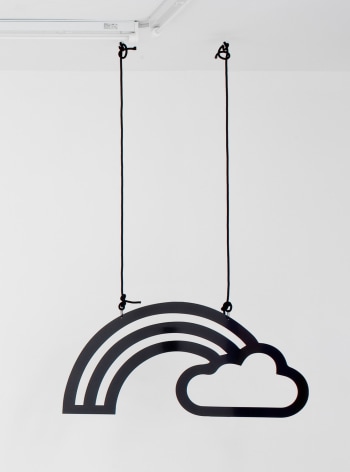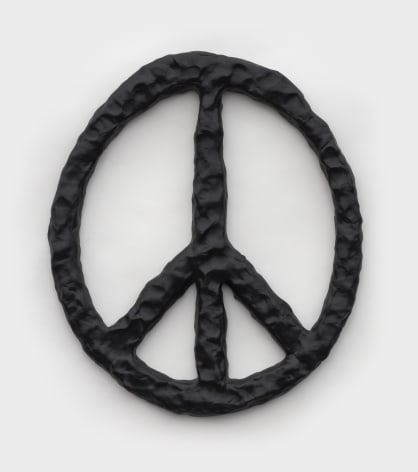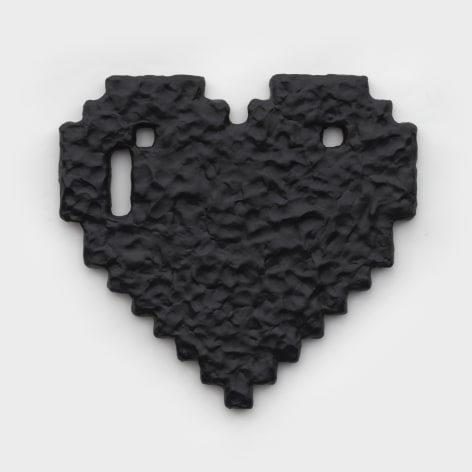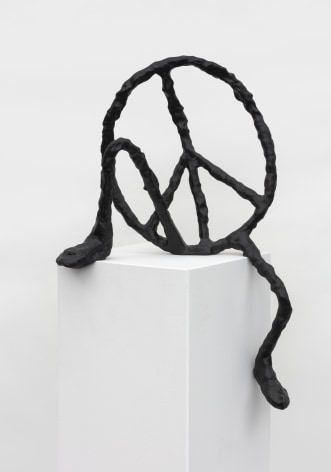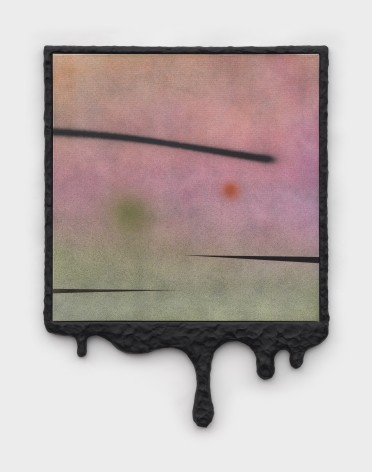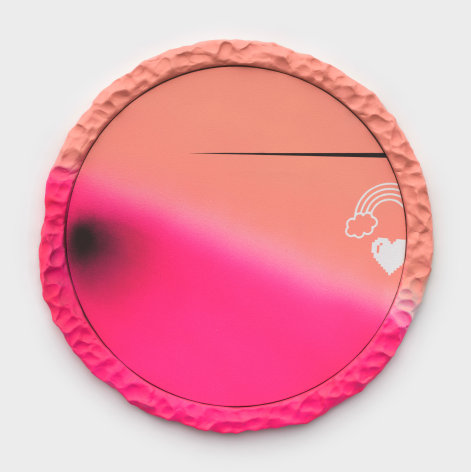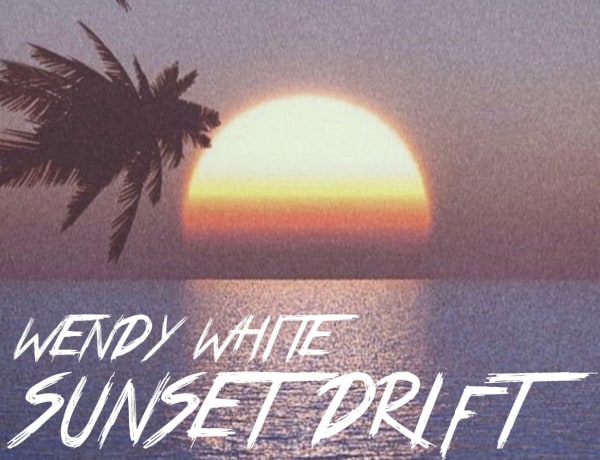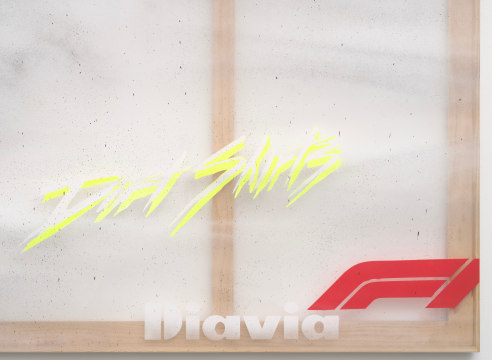
Wendy White
Sunset Drift
July 8 - August 1
Gaa Gallery Provincetown
Gaa Gallery is pleased to present Sunset Drift, a solo exhibition of new paintings and sculptures by Wendy White. This will be White’s first solo exhibition with the gallery in Provincetown.
„Illustrious the passing light! Illustrious the pale reflection on the new moon in the western sky!“
(Walt Whitman, Song At Sunset, 1855)
“When logic and proportion, have fallen sloppy dead, and the white knight is talking backwards (…) Feed your head!”
(Jefferson Airplane, White Rabbit, 1967)
Twilight. Glow. Tint. Sunrise. Fading. Ruddy. Mellow. Crimson. Golden. Dusk.
What Makes the Sunset? And what the Sunrise? At a point, we might gaze the warm and misty aura of the sun – this warm and all-encompassing symbol of light. A moment, or merely it’s shadow, but always a state in between. It’s the magic hours – these vague instants in which our perceptions open and our minds expand. The moments in which we can experience an almost atmospheric quality surrounding us. A feeling through which we see other things, and in which colors come in and out, or even fade into warm light permeating the air.
It’s these moments that set up a base from which Wendy White (b. 1971, Deep River, CT) embarks on a vivid journey to investigate the sunset drift as both a metaphorical subject and formal reference point to create dense and dream-like compositions. Echoing stratospheres and hidden surreal pathways through our inner states, the canvases recall the history of gestural abstraction, blurry expressionistic compositions, and defined traditions of American landscape painting, while at the same time pushing back the idea of a solely illusionistic space. Instead, the works from White’s After Calder series present themselves in an ambivalent state through the addition of sculptural shapes hanging in front of the canvas on a thin cotton rope, like an almost minimal intervention of hard-edge forms.
Juxtaposing airbrushed canvases with sculptural elements, the paintings here extend the notion of a semi-abstract composition into the physical space of the viewer. As interventions into the realm of the beholder, White’s additions challenge the historical conventions of a traditional gaze and its natural habit to examine paintings from a frontal focal point much like their iconic mobile references from the 1930s. Blurring the lines between painting and sculpture, White’s hanging shapes also function like the prelude of a magic architecture that visualizes the creation and perception of a painting according to its very own, internalized laws. Silently and subtle, like a formal satellite, they hang stationary in front of the canvas and create a space in between. A threshold in which we can discover the symbolic nature of signs through implicit movement and perceptible tension – like a pendulum stuck in space, but eager to start and transgress their kinetic immobility.
Seen as formal connectors, White’s approach to forms and media is also reflected in her use of material that shifts humorously between an expected hardness akin to bronze or wire and an unusual softness of ropes that resemble steel. Epoxy resin and enamel resemble heavy bronze, but at the same moment seems to melt out of form – like the frames that support White’s smaller paintings. It’s a subversion of both material and form, subject and setting, space and time. A world that is not revealing itself all at once, but that does so in the duration of looking. In moments that can extend beyond their reality and that shift between the warm feeling of the sun and the experience of pictorial space as something that opens associations and connects thoughts.
A site-specific wall treatment that reminds us of a sunset on the horizon functions as a formal bond that intertwines things, softens forms, and invites the works to slowly relax and fade into its warmness. It’s as if the natural barriers of a room dissolve and the horizon extends into space. Here, signs and signifiers melt with clean, direct, and real shapes into the ephemeral and immaterial space that White evokes.
Echoing White’s interplay of melting shapes and forms, a series of sculptural peace signs stands out – as witnesses of this special transgression and symbols of the prevailing mood. Without depriving them of their current political meaning and hence their state as historic symbols inherent to every generation, White references their iconic quality – their potential to function as both semantic and signifying characters. As visual metaphors enriched with hopes and dreams of former beliefs, they literally pick up, lose, and re-attract new meaning during their travels through time.
Transferred into the medium of sculpture, White’s peace signs take on a rather caricaturist quality – one that personifies them in a humorous yet tragic way: Imagine a sign we usually don’t concede to as a character of its own, but which now takes on the role of a visitor, or likewise protagonist reflecting his own significance. A symbol that walks through and maybe doesn’t even look up. That hangs its head a bit and shuffles along. Here its posture and mood lead to a deeper, more hidden, and maybe darker (but not necessarily melancholic), emotional state that is exhausted by its very own responsibilities and in need of rest. Tired of its overuse and the insignificance of its ubiquity. Likewise in need of a deeper and more profound value that shakes off the fact that we take its meaning for granted and seeks a new, truer, and deeper signification re-connecting to its inherent qualities of freedom and peace.
As witnesses to White’s Sunset Drift, the peace signs take a rest, apparently begin to calm down and start to fade slightly into the warmth of the space. Into the aura of a Sunset Drift, where logic and proportion have truly fallen sloppy dead.
- Philipp Fernandes do Brito
Wendy White's work encompasses painting, sculpture and installation, defying the boxed-in limitations of the traditional canvas. Born in Deep River, Connecticut, White lives and works in New York City. She has a BFA from the Savannah College of Art and Design and a MFA from Mason Gross School of the Arts at Rutgers University.
Institutional group exhibitions include Low Pressure at Museum Goch, Germany; The World’s Game: Fútbol and Contemporary Art at Perez Art Museum, Miami (2018) and LACMA, Los Angeles (2014); Full of Peril and Weirdness: Painting as a Universalism, M Woods, Beijing (2015); Globe as a Palette: Contemporary Art from the Taguchi Collection, Hokkaido Obihiro Museum of Art (2019); The Art Show: Art of the New Millenium in Taguchi Art Collection, The Museum of Modern Art, Gunma, Japan (2016); Taguchi Hiroshi Art Collection at The Museum of Fine Arts, Gifu, Japan (2015); American Idyll at SCAD Museum of Art, Savannah, GA (2018); EXPEDITION at The Brattleboro Museum and Art Center (2021); and So Athletic, Kunstverein Rosa-Luxemburg-Platz, Berlin (2012).
Solo gallery exhibitions include Kaikai Kiki, Tokyo; Leo Koenig Inc., New York; Shulamit Nazarian, Los Angeles; COUNTY, Palm Beach; Maruani Noirhomme, Brussels; VAN HORN, Düsseldorf; Denny Dimin Gallery, New York; David Castillo, Miami; Eric Firestone Gallery, New York; Andrew Rafacz Gallery, Chicago; Galerie Jérôme Pauchant, Paris; Sherrick & Paul, Nashville; and Galeria Moriarty, Madrid.
Wendy White is the recipient of the Teiger Mentorship in the Arts at Cornell University (2019), a Painting Fellowship from the New York Foundation for the Arts (2012) and a George Segal Painting Grant (2008). Her work was featured in Phaidon’s anthology Vitamin P2: New Perspectives in Painting (2011) and has been reviewed in The New Yorker, The New York Times, Artforum, Art in America, New York Magazine, The Washington Post, The San Francisco Chronicle, Artnet, Time Out New York, Modern Painters, ArtNews and BOMB Magazine, among others.
Permanent collections include Detroit Institute of the Arts; The High Museum; RISD Art Museum; Museum Goch; Kranzberg Art Foundation; Saks Fifth Avenue; Taguchi Art Collection; UK Art Museum; Mercedes-Benz Stadium; Savannah College of Art & Design; UBS Art Collection; Progressive Art Collection; Jiménez-Colón Collection; The Shinola Hotel; Tulip Collection; Rocket Mortgage Field House; Detroit Pistons Practice Facility; Southern Poverty Law Center and ARCO Foundation.

